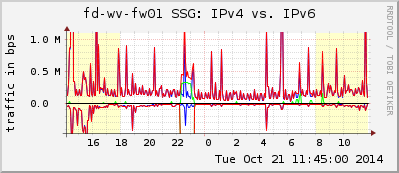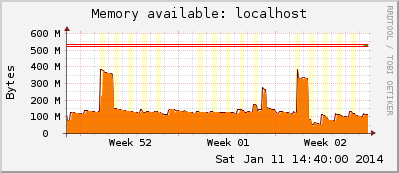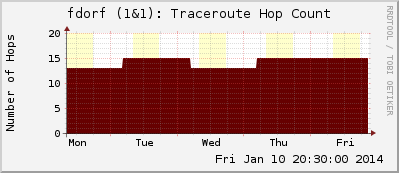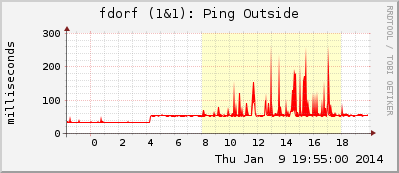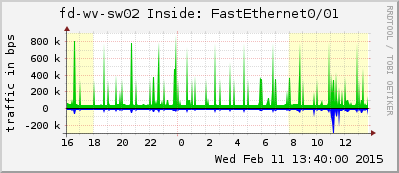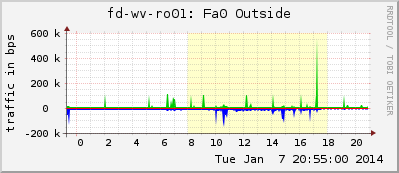I am very interested in statistics about the usage of IPv6 on Internet routers and firewalls. The problem is, that most routers/firewalls do not have unique SNMP OIDs for IPv4 and IPv6 traffic, but only the normal incoming/outgoing packet counters per interface. Therefore I am using two independent ethernet ports and cables between my outer router and my first firewall, one for IPv4-only and the other one for IPv6-only traffic. Now I have independent statistics for each protocol and can combine them in one summary graph. (Though I know that this will never be a “best practice” solution…)
Continue reading IPv4 vs. IPv6 Traffic Statistics on Routers
